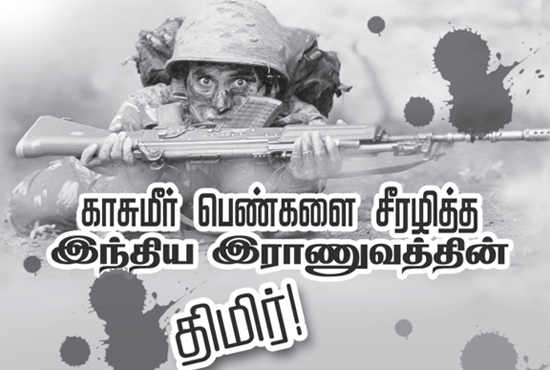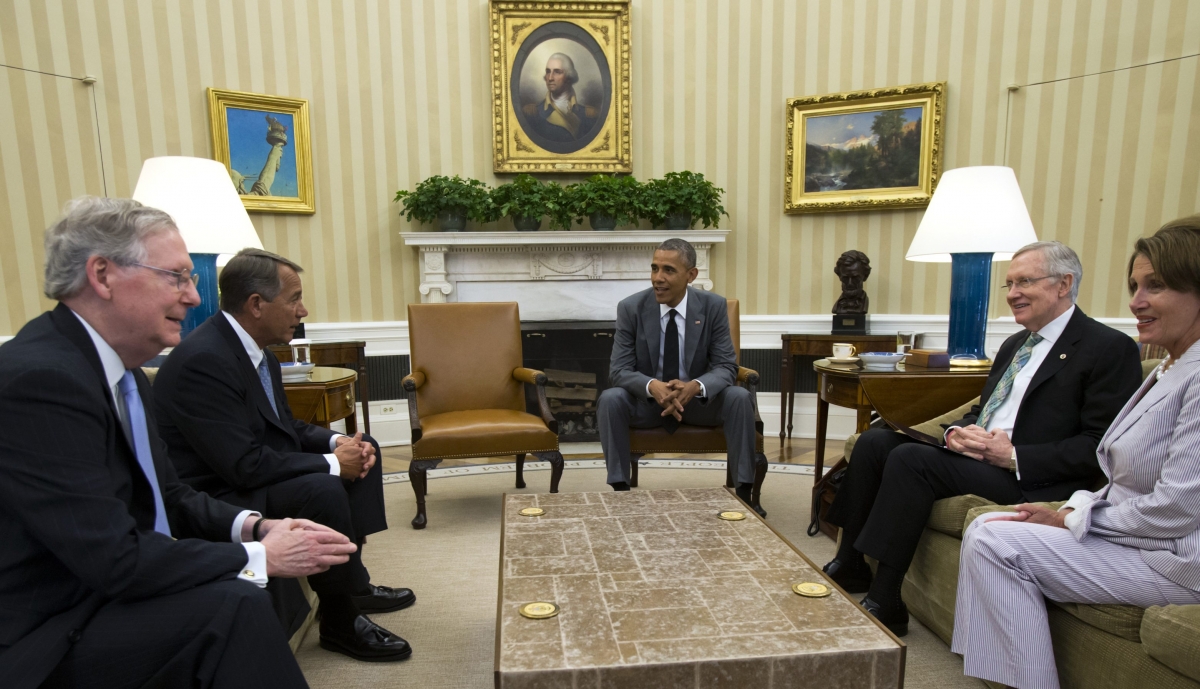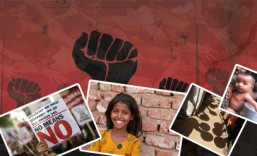By Alejandro Reuss
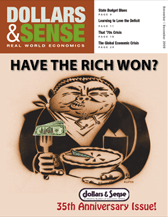
This article is from the November/December 2009 issue of Dollars & Sense magazine.

A capitalist economy is like a very complex machine. It involves millions of individuals and capitalist firms, all making decisions that are not deliberately coordinated beforehand. The many gears of this machine do not automatically mesh. When some people decide to save part of their incomes, it does not automatically mean that they will find others who want to borrow and invest. When some people decide to invest, it does not automatically mean that they will find buyers for the goods produced as a result. Whether the gears of a capitalist economy mesh or not depends on the institutional framework in which capitalist companies operate. If the institutional framework does not work, and the gears do not mesh, the result is a crisis.
Radical political economists in the United States have termed the whole set of conditions and institutions that shape the process of capitalist profit-making, in a particular society at a particular time, a “social structure of accumulation.” Capital accumulation, the process of capitalist companies making profits and re-investing them to expand their operations, is essential to capitalist economies. Capitalist firms that cannot turn a profit will not have an incentive to invest. If capitalist companies do not invest, factories will be shuttered and workers unemployed. Capitalist economies always go through boom-and-bust cycles, with recessions interrupting the process of capital accumulation and economic growth. Most of the time, these crises are shallow enough that “normal” economic growth resumes without major changes in framework institutions. However, severe crises, exposing serious defects in the existing “social structure of accumulation,” may result in the overturning of the old framework and the establishment of a new one.
The most severe crises may actually threaten not only the established framework, but even the continued existence of the capitalist system itself. In the last century, there have been three periods of profound crisis in the framework institutions of U.S. capitalism: the Great Depression of the 1930s, the crisis of the 1970s, and the current crisis. Of these three, the Depression was the most profound, though it did not come close to threatening the capitalist system in the United States (it came much closer in other capitalist countries). Both the Depression and the crisis of the 1970s, however, resulted in major changes in the framework institutions of U.S. capitalism. The Depression ushered in an era in which the framework included a relatively large government role and powerful unions in the most important industries. This is sometimes known as the period of “regulated capitalism.” The crisis of the 1970s ended this era and ushered in another, characterized by a new framework in which the government role diminished and unions were gravely weakened. This is sometimes known as the era of “neoliberal capitalism.”
A retrospective look at the crisis of the 1970s—as a pivot between two different eras in the history of U.S. capitalism—is not just an exercise in nostalgia. Rather, it is an opportunity to try to extract lessons from the history of U.S. capitalism, including this and other crises, to apply to the current crisis and its possible outcomes.
The “Golden Age” of U.S. Capitalism
Mainstream (“neoclassical”) economists often act as if capitalist economies operate according to unchanging universal laws, and that any violation of these “laws of the market” (such as government macroeconomic intervention, industrial regulation, social welfare spending, unions, etc.) inevitably spells disaster. The performance of the U.S. economy during the so-called “Golden Age,” from the late 1940s to the early 1970s, belies this view.
Our first key lesson: Capitalist economies can operate under a wide variety of institutional frameworks that foster capital accumulation and economic growth.
By most conventional measures, the U.S. economy performed better during the “Golden Age” than during comparable periods in U.S. history, combining high rates of economic growth along with low rates of unemployment and inflation. From the late 1940s to the early 1970s, the U.S. economy grew at an average annual rate of nearly 4%. The annual unemployment rate only exceeded 6% twice in the 25 years between 1949 and 1973. The annual inflation rate, too, only topped 6% twice, and was actually under 2% for 14 of the 25 years in this period. The real average hourly earnings of production workers increased at an average rate of over 2% per year.
During this period, the U.S. economy was less characterized by the “free market” policies favored by today’s mainstream economists than during the periods before or since. A much broader consensus existed among economists and policymakers of the need for government intervention to stabilize the overall economy, prevent recessions, and maintain full employment. Government spending on consumption and investment (which excludes transfers) was somewhat higher (generally 21-23% of GDP) from the late 1950s to the early 1970s than it has been since (generally less than 21%, and less than 19% between the early 1990s and the current recession). Several major business sectors, including transportation, communications, utilities, and, most importantly, banking and insurance, were highly regulated. The regulation of the financial sector, in particular, was a response to the Depression and an attempt to reduce the financial instability that had helped precipitate it. Unions had a much larger and more secure place in the U.S. economy. The unionization rate peaked at over one-fourth of the labor force in the mid 1950s, and remained over 20% into the mid 1970s (for nonagricultural workers, it peaked at nearly 35% and remained over 25% into the mid 1970s).
The radical economists Samuel Bowles, David Gordon, and Thomas Weisskopf, in their influential book Beyond the Waste Land, identified three key pillars of the postwar social structure of accumulation, which they termed the “limited capital-labor accord,” the “capitalist-citizen accord,” and the “Pax Americana.”
The limited capital-labor accord included the willingness of large employers to recognize unions and bargain collectively, and the unions’ acceptance of management control over the production process in exchange for wage increases tied to productivity growth, health and retirement benefits, and job security. Radical economists speak of a limited capital-labor accord since these arrangements excluded the majority of U.S. workers, who were not employed by large companies in the “core” industries (auto, steel, trucking, etc.). In addition, the idea of the accord should not be interpreted to mean that industrial conflict ended. Even in the core industries, employers only grudgingly accepted unions and, unable to destroy them by frontal assault, adopted strategies akin to low-intensity warfare.

Richard Nixon bowling at the White House Lanes. (Photo credit: The Ollie Atkins Collection, Special Collections & Archives, George Mason University Libraries.)
Nixon responded to the threat of inflation with unprecedented peacetime wage and price controls.
The capitalist-citizen accord included the government commitment to preventing mass unemployment and the establishment of the social welfare state. These were responses to the Great Depression and the upsurge in social protest during the 1930s, and helped moderate the levels of social protest in the late 1940s and 1950s. Again, the idea of an “accord” requires serious qualification. In the era before the main advances of the Civil Rights and women’s liberation movements, most of the U.S. population was excluded from any accord. These grievances would give rise to the explosive social protests of the 1960s.
The “Pax Americana” refers to the dominant position of the United States in the capitalist world. In the early postwar period, the leading U.S. companies had little to fear from international competitors, then only beginning to emerge from the ruin of the Second World War. U.S. political and military power, meanwhile, helped secure sources of cheap raw materials and energy. The U.S. government propped up friendly dictators whom it could count on to “fight communism,” maintain the security of U.S. companies’ investments, and quash efforts at labor organization. When this strategy failed, as when socialist or nationalist governments came to power and threatened U.S. companies’ property or access to cheap labor, the U.S. government engineered coups or intervened militarily.
Capitalists found plenty to complain about in the postwar social structure of accumulation, especially the large role of government and the relative strength of the labor movement. Government macroeconomic stabilization policies, the welfare state, and large powerful unions in the core industries, however, were part of an institutional framework that fostered capitalist profitability and economic growth. Government macroeconomic stabilization policies helped to prevent recessions, and the loss of sales and profits they entail. Social welfare programs, like unemployment insurance, acted as “automatic stabilizers” by moderating the decline in incomes and spending during recessions. The existence of unions and the steady increase in real wages helped to fuel booming demand for the products churned out by growing mass-production industries.
The Demise of the Golden Age
In the 1970s, the United States’ position as the unchallenged colossus of the capitalist world was suddenly threatened from multiple directions: rising international competition, spiking energy prices, declining productivity and profitability, and soaring inflation and unemployment. The United States’ trade deficit crept up in the course of the 1960s, and government deficits emerged late in the decade and persisted through the 1970s. Declining international confidence in the dollar led to the depletion of U.S. government gold reserves, as international holders of dollars demanded redemption of their dollars for gold. (The Nixon administration responded by ending the fixed-rate convertibility of the dollar for gold.) Inflation picked up in the late 1960s, ratcheting up from about 3% in 1966 to nearly 6% in 1971. While these rates may not look that high now, they were alarming at the time, coming on the heels of a seven-year period in which the annual inflation rate never exceeded 1.6%. (Nixon responded to the threat of inflation with unprecedented peacetime wage and price controls.) In 1973-1974, the first of two major “oil shocks” increased the price of petroleum four-fold, dramatically raising energy costs for both consumers and businesses. Workers’ wage demands outpaced the rate of productivity growth, driving up unit labor costs for businesses. The annual inflation rate spiked to over 10% in 1974 and again in each of the three years from 1979 to 1981. The annual unemployment rate topped 8% in 1975 and would reach nearly 10% in 1982.
The economy seemed trapped in the new nightmare of “stagflation,” so called because it combined low economic growth and high unemployment (“stagnation”) with high rates of inflation. Traditional macroeconomic policy tools seemed powerless to deal with this new beast. In the 1960s, the idea of a stable inverse relationship between unemployment and inflation (known as the “Phillips curve”) became part of the economic-policy orthodoxy. If the unemployment rate was high, inflation was likely to be low, and vice versa. This “tradeoff” left policymakers with the means to combat unemployment or inflation when either appeared separately. When facing a recession, policymakers could lower interest rates, increase government spending, or lower taxes to stimulate demand and bring down the unemployment rate, at the cost of some increase in the inflation rate. When dealing with inflation, they could raise interest rates, lower spending, or raise taxes to reduce demand and “cool off” the economy, at the cost of some increase in unemployment. When high rates of inflation and unemployment appeared simultaneously, however, orthodox policy seemed to lack a solution.
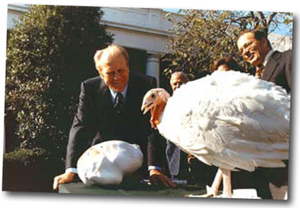
Gerald Ford pardoning a turkey.
President Ford declared inflation “public enemy number one” and initiated his “Whip Inflation Now” campaign. It failed.
What brought the “Golden Age” to such an inglorious end? The conditions that fostered successful capital accumulation and economic growth in the United States during the “Golden Age” broke down toward the end of this period. The postwar institutional framework, so successful in conventional terms for a quarter century, gave way to crisis not only because conditions changed around it, but because its own operation undermined its continued viability.

Our second key lesson: As conditions change, an institutional framework that had fostered capital accumulation and economic growth may come to hinder them.
All three pillars of the postwar framework were shaken during the 1960s and 1970s. Internationally, the United States no longer enjoyed uncontested economic, political, and military dominance over the capitalist world. The U.S. government had encouraged the reconstruction of the economies of Western Europe and Japan, both to undermine the appeal of communism in those countries and to demonstrate the superiority of capitalism to the rest of the world. The revival of manufacturing in Europe and Japan, however, also meant increased competition for U.S. firms in “core” manufacturing industries like steel and auto. Resistance to U.S. dominance in the global South, meanwhile, undermined U.S. companies’ access to cheap materials and energy resources. The 1973 embargo of Western buyers by petroleum-producing countries and the ensuing oil-price hike coincided with a low point in the United States’ ability to project its military and political power international-ly, just after the defeat of the U.S. military in Vietnam. “If instead of in 1973, OPEC had tried to raise prices and restrict production in 1953 or in 1963,” radical economist Stephen A. Marglin argues, “American marines would almost certainly have been dispatched.” In other words, under other political circumstances, the “oil crisis” of the 1970s would likely not have occurred.
Domestically, the so-called “capitalist-citizen accord” broke down in the politically explosive 1960s. Mass social movements—civil rights, women’s liberation, anti-war, environmental—were part of this change. Increased pressure for social reform also gave rise to increased government regulation of private business. Under the old “economic” regulation, government agencies had overseen specific industries such as railroads, trucking, telecommunications, utilities, or banks. In contrast, the “new social regulation,” including environmental, consumer-protection, occupational safety and health, and anti-discrimination laws, affected companies across all industries. Regulation was a way, in the late 1960s and early 1970s, for the government to respond to increasing demands for reform without increasing government spending (already surging for both domestic and war purposes). Capitalist corporations railed against the new regulations as imposing onerous new costs of doing business.

Jimmy Carter jogging on the White House grounds.
Federal Reserve chair Paul Volcker, appointed by President Carter, engineered a dramatic increase in interest rates. This detonated a deep recession.
Meanwhile, the relatively low unemployment of the postwar period meant that, by the 1960s, most active workers had no direct experience (or ingrained fear) of mass unemployment. In the late 1960s, the unemployment rate actually dipped lower (below 4% for each of the four years from 1966 to 1969). Marglin argues that low unemployment, along with the cushion offered by the welfare state in the event of unemployment, resulted in a declining “cost of job-loss.” Declining fear of unemployment emboldened workers to demand larger wage increases while reducing capitalists’ authority on the shop floor, their ability to enforce a high pace of work, and therefore the rate of productivity growth. Radical economist James Crotty points to the combined effects of rising wages and declining productivity growth in driving large increases in labor costs per unit of output. Unit labor costs, constant in the first half of the 1960s, grew at nearly 2% per year from1966 to 1967, and at over 6% per year from 1968 to 1969. These rising costs, in turn, ate into capitalists’ profits—the “full employment profit squeeze.”
It may seem strange that radical economists, whose sympathies lie with the working class, attribute the crisis to increasing wages and declining profits. They do not, however, mean to “blame” workers for the crisis. Rather, they are making two points:
First, unemployment is not just a sickness from which capitalist economies can be “cured,” to the benefit of all concerned. Unemployment is one of the cogs that capitalist economies require to function. Going back to Karl Marx, radical economists have understood the importance of unemployment in ensuring the conditions for profitability in capitalist economies. Capitalists are more able to resist demands for wage increases (or even to impose wage cuts) if there are many unemployed people seeking work, and the employers can credibly threaten to replace current workers with unemployed job-seekers. Capitalists’ ability to enforce a high pace of work also depends on the existence of substantial unemployment. The threat of firing, a key means for disciplining workers, is more credible if employers can easily replace fired workers and if workers losing their jobs would likely face a long and costly period of unemployment. Long periods of very low unemployment threaten capitalist profitability for both these reasons.
Second, profits are the lifeblood of capitalism. If capitalists do not expect to make a profit, they will not invest (purchase buildings, machinery, etc.) or hire workers. This is not to say that what is in the interests of capitalists (profits) is also in the interests of workers, except perhaps in the way one could say it is in the interest of an armed robber to get the victim’s money and it is in the interest of the victim to hand it over. Rather, it means that capitalists use their control of the means of production to extract a tribute, in the form of profit, from what the workers produce. The power of the capitalists over investment and employment in a capitalist economy means that, if the capitalists cannot extract their tribute, the rest of society will suffer.
The Capitalist Mobilization
The crisis of the 1970s marked the end of the “Golden Age” framework and the advent of “neoliberal” capitalism. The triumph of an economic policy agenda hostile to government economic intervention, social welfare programs, and labor organization was part of a broader shift to the right in U.S. politics. The right drew on currents in U.S. political culture pining for an imagined past of individual independence and blaming government regulation, taxation, and social programs for the perceived economic and moral decay of society. It tapped into and fueled a backlash against the civil rights and women’s liberation movements. Conservatives channeled this rage into attacks on social programs and affirmative action. It also drew on the power of nationalism, and the identification of many ordinary people with the superpower status of the United States. It promised to reverse recent blows to the national self-image—the defeat in the Vietnam War, the rise of OPEC and the oil shocks, the Iranian Revolution and hostage crisis, the apparent loss of economic dominance to international competitors—and to restore the country to its rightful place of worldwide supremacy. These were the pillars of right-wing “populism” in the 1970s and 1980s, and to a great extent remain so today.
As important as this “populist” appeal was, however, the “right turn” in U.S. economic policy also had distinctly elite sources. Facing multiple threats during the crisis of the 1970s, capitalists (especially the very largest capitalist corporations) mobilized in extraordinarily effective ways to ensure that the crisis was resolved in a way that was favorable to their shared class interests.
There were three major prongs in the capitalist mobilization. First, they financed policy organizations (or “think tanks”) which helped develop the conservative economic policy agenda. Capitalists channeled financial support to existing conservative think tanks, like the Hoover Institution and the American Enterprise Institute, which until then had limited resources and influence. They also supported new policy organizations, founded in the early 1970s, like the Institute for Contemporary Studies and the Heritage Foundation. This support helped vault both older and newer conservative think tanks to national prominence.
Second, they stepped up the scale and effectiveness of their lobbying efforts. Capitalists swelled the membership of existing business organizations, such as the U.S. Chamber of Commerce, and large corporations created a major new organization, the Business Roundtable. Founded in 1972 (merging two earlier organizations), the Business Roundtable brought together the largest U.S. industrial companies. By 1974, its 150 members included 60 of the largest 100 industrial companies in the United States and 90 of the largest 200. During the late 1960s and early 1970s, large corporations had been on the defensive, facing a rising tide of environmental, occupational safety and health, and consumer-protection regulation. By the late 1970s, two major pieces of reform legislation, a labor-law reform proposal backed by the AFL-CIO and a bill to establish a consumer-protection agency, went down in defeat, largely due to the business mobilization against them. As political scientist David Vogel put it, “business turned the tide” politically, even before the watershed 1980 election brought a slew of new conservatives to Congress and Ronald Reagan into the White House.
Third, they directed support to conservative candidates for public office. Capitalist corporations do not always direct campaign contributions only to candidates they perceive as ideologically “pro-business.” Individual corporations also use campaign contributions to gain influence with elected officials and may contribute to candidates they do not regard as generally pro-business, but who they think are likely to win election and repay the favor of a campaign contribution. Companies in highly regulated industries and those highly dependent on government contracts are especially likely to engage in this kind of “pragmatic” campaign giving. By the 1978 election cycle, corporate political action committees began to shift away from pragmatic and toward ideological contributions. Rather than contribute to powerful incumbents large corporations increasingly directed their contributions to conservative challengers. This support helped shift the ideological composition of Congress in a “pro-business” direction, especially in the 1980 elections, and helped conservatives defend their gains in 1982.
The capitalist mobilization of the 1970s played a big role in bringing about a sea change in economic policy, sometimes known as the “right turn,” beginning late in the decade and continuing with the “Reagan Revolution” in the 1980s:
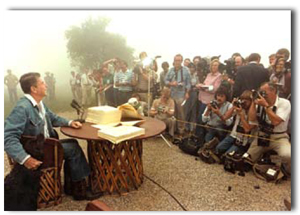
Reagan signs the Economic Recovery Tax Act of 1981 at the “Western White House,” Rancho del Cielo.
Reagan’s policies were not reversed, and in many ways were deepened, by subsequent administrations, both Republican and Democratic.
The “full employment profit squeeze” ended in the late 1970s, when Federal Reserve chair Paul Volcker, appointed by President Carter, engineered a dramatic increase in interest rates. This detonated a deep recession and pushed the average annual (official) unemployment rate near 10% in both 1982 and 1983. Massive unemployment was not an unintended consequence of this policy, but the chosen means to finally break the power of workers to push for wage demands. By the 1980s, the power of the labor movement had been waning for years, and individual capitalist corporations had adopted an increasingly aggressive stance toward labor. This employer offensive intensified after Reagan broke the air-traffic controllers’ strike in 1982, widely interpreted as a signal to capitalists of “open season” on unions. Union decline accelerated, and strikes (which had become virtually unwinnable in the new anti-union climate) dropped off dramatically.
For all their railing against the evils of “big government,” conservatives did not slash federal expenditures during the 1980s. Rather, the priorities changed. Conservatives attacked social programs (though the “end of welfare as we know it” would have to wait for the 1990s and the Clinton administration) while the Reagan administration pursued an unprecedented peacetime military build-up. This spending spree was not only a boon to defense contractors, but also part of the administration’s program of rebuilding U.S. military power globally.
Meanwhile, corporations and the rich enjoyed a bonanza of tax cuts, abetted by “supply side” economists who argued that high marginal tax rates were destroying incentives to work and invest. Tax reforms in 1981 and 1986 cut the marginal tax rate on the highest personal incomes from 70% to 34%, raised the threshold for the estate tax, and cut corporate income tax rates.
Both the Carter and Reagan administrations pursued the rollback of industry-specific regulation on sectors like telecommunications, transportation, and finance. The deregulation of finance was mostly accomplished in the early 1980s (leaving only regulatory separations, dating back to the Depression, between commercial banking, investment banking, stock brokering, and insurance, to be repealed under Clinton during the 1990s). The Reagan administration also had a strategy for defanging the “new social regulation,” even when it could not repeal the regulatory legislation, by slashing funding and staffing of enforcement agencies.
The so-called Reagan Revolution was more than just a set of policies pursued by one administration. Reagan-era policies were not reversed—and in many ways were deepened—by subsequent administrations, both Republican and Democratic. Like the New Deal in the 1930s, the Reagan era laid the groundwork of a new set of relatively stable framework institutions. The so-called neoliberal social structure of accumulation, monstrous though it was, functioned as a framework for capital accumulation and economic growth for nearly three decades. Now it has fallen into crisis.
Where to from Here?
When looking at history retrospectively, it is sometimes hard to remember that the outcome was not a foregone conclusion—that things did not have to turn out the way they did. That the postwar framework was “interventionist,” however, does not automatically mean that its demise would give rise to a “free market” framework, as if economic policy swung like a pendulum between two fixed positions. Multiple policy proposals contended as possible ways out the 1970s crisis. Among these were proposals that would have increased the role of government in economic life: “incomes policy” (in which the government plays a much larger role in determining the distribution of income between labor and capital at a national level, as in many Western European social democracies) and “industrial policy” (in which the government plays a much larger role in directing investment to particular sectors of the economy, an idea given traction in the 1970s and 1980s by the success of Japan with such policies). The triumph of “neoliberal” capitalism in the wake of the 1970s crisis was not inevitable.
Our third key lesson: The outcome of a crisis is not preordained by the characteristics of the preexisting framework or the details of the crisis itself, but determined by the balance of power among different social groups with conflicting interests.
This last lesson is, perhaps, the most important in understanding the current economic crisis and its possible outcomes. Consider the last two profound crises of the U.S. economy, the Great Depression and the crisis of the 1970s. In the United States, the Depression resulted in a major upsurge in union organizing. Major industries like automobiles, steel, and long-haul trucking were organized for the first time. The national unionization rate more than tripled—from less than 7% to nearly 24% of the labor force between 1930 and 1947. This upsurge from below both benefited from and helped to force policy changes from above, including the creation of the modern welfare state. In other countries, where the balance of forces was different, the consequences of the Depression were different—including, of course, the rise of Nazism. During the crisis of the 1970s, capitalists, especially the largest capitalist corporations, mobilized with extraordinary effectiveness and used the crisis to help bring about policy changes they wanted. Again, the outcomes were not the same in all countries. The neoliberal policy agenda that took hold in the United States and the United Kingdom has not gone nearly so far in other rich capitalist countries.
The current crisis has created a fluid situation in economic policy. In response to the current recession, the most severe for the United States since the 1930s, the federal government has adopted “counter-cyclical” (anti-recession) policies that mainstream economists claimed were neither necessary nor desirable. It has extended large bailouts to private companies, mostly to financial institutions, though also to the ailing auto industry that was once the crown jewel of U.S. capitalism. The crisis has given rise to calls for new financial regulation, which would begin to reverse the de-regulating trends of the last thirty years. Major new regulation or reforms to the energy and health-insurance sectors are also possible. Some of these measures have met with sharp opposition, both from big capitalist corporations (e.g., health-insurance companies) and from reactionary populist movements. There has been little or no indication, however, of any resurgence in labor organizing or any mass mobilization in favor of new regulation, an expanded social-welfare state, a shift in labor-relations policy back in favor of workers, or other reforms, to say nothing of a more radical social agenda.
Few people outside the rabid right believe that capitalism faces imminent abolition in the United States. For those of us who would like to see the capitalist system replaced with a society based on workers’ control of their own workplaces, democratic control over the economy-wide allocation of resources, guaranteed access to basic goods (like adequate nutrition, shelter, health care, and education) as human rights, and a generally egalitarian distribution of wealth—to use the fashionable term, “socialism”—the outcomes of the present crisis are, nonetheless, a matter of great importance. The directions taken in economic policy at critical junctures in history can have a big effect on the conditions of life for millions of people and the conditions of political struggle for decades to come. These outcomes are unlikely to be positive without a resurgence of social movements—the labor movement and others—to counter the power of large corporations and right-wing populism.
If new movements do emerge, they should not become the foot soldiers of a particular government administration or political party (as, unfortunately, the union movement became for the Democratic Party after the New Deal). Independent grassroots movements might support some reform proposals from a particular party or administration, pressure others to go further than its sponsors would want, and oppose still others. They could develop reform proposals of their own, to challenge not just this or that economic policy, but the foundations of the capitalist system itself. They could spawn not only new organizations in workplaces and communities, but also new political parties, unbeholden to capitalist patrons. These are ways to fight for and win positive reforms, to be sure, but also, more importantly, to rebuild the fighting capacity of movements for radical social change.
Alejandro Reuss is an economist and historian, and a member of the Dollars & Sense collective.
Sources: David M. Kotz, Terrence McDonough, and Michael Reich, Social Structures of Accumulation: The Political Economy of Growth and Crisis, Cambridge University Press, 1994; Stephen A. Marglin and Juliet B. Schor, The Golden Age of Capitalism: Reinterpreting the Postwar Experience, Clarendon Press, 1990; Bureau of Economic Analysis, National Economic Analysis, Current Dollar and Real GDP www.bea.gov; Bureau of Labor Statistics, Labor Force Statistics from the Current Population Survey, Annual Averages, Unemployment Rate, Historical Data, www.bls.gov; Samuel Bowles, David Gordon, and Thomas Weisskopf, Beyond the Waste Land: A Democratic Alternative to Economic Decline, Anchor Press/Doubleday, 1983; Michael Goldfield, The Decline of Organized Labor in the United States, University of Chicago Press, 1987; David Vogel, Fluctuating Fortunes: The Political Power of Business in America, Basic Books, 1989; James Crotty, “Review: Turbulence in the World Economy, by Robert Brenner,” Challenge, Vol. 42, No. 3, 1999; Dan Clawson and Mary Ann Clawson, “Reagan or Business: Foundations of the New Conservatism,” in Michael Schwartz (ed.), The Business Elite as a Ruling Class, Holmes and Meier, 1987; Joseph G. Peschek, Policy-Planning Organizations: Elite Agendas and America’s Rightward Turn, Temple University Press, 1987; Val Burris and Games Salt, “The Politics of Capitalist Class Segments: A Test of Corporate Liberalism Theory,” Social Problems, Vol. 37 No. 3, 1990; United States Department of the Treasury, “History of the U.S. Tax System,” www.treas.gov; Tax Foundation, “U.S. Federal Individual Income Tax Rates History, 1913-2009” www.taxfoundation.org; Internal Revenue Service, “Corporation Income Tax Brackets and Rates, 1909-2002,” www.irs.gov.
நன்றி:http://www.dollarsandsense.org/archives/2009/1109reuss.html

